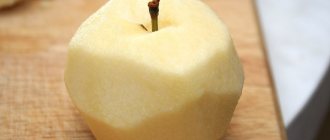Patients with gastrointestinal diseases, more than anyone else, need a special therapeutic diet. Diet therapy is the most important element in the treatment of gastritis. Even medications do not provide such a positive effect as a properly selected set of foods and dishes. Therefore, without a properly selected table, it is almost impossible to get rid of gastritis.
Gastritis is one of the most common gastrointestinal diseases. It affects almost 90% of the world's population. For recovery, taking medications alone will not be enough. It is very important to follow a diet. During exacerbations, permitted foods are strictly limited, but during stable remission, the options for possible foods will be more expanded. To get the necessary vitamins you need to eat salads, the main thing is to remember what foods are allowed and prohibited for gastritis.
Basic nutrition for the treatment of gastritis
The essence of therapeutic nutrition is to minimize the risks of any irritation of the inflamed mucous membrane - mechanical (rough and dry food, large pieces, hard fibers), thermal (very hot and very cold food), chemical (salty, spicy, sour, pickled, smoked, fried, fatty).
The diet of a patient with gastritis consists mainly of liquid and pureed foods, pureed and creamy dishes, viscous porridges, delicate soufflés, and soft foods. Steamed meat and steamed fish are allowed, which must be chewed thoroughly.
During the period of remission, you can eat salads. No matter how thoroughly a person chews, pieces of food from the salad will still be swallowed unchewed or not chewed enough. Therefore, salads can be eaten when the disease does not make itself felt and the patient feels comfortable, that is, the mucous membrane is in normal condition and is able to accept solid food.
Salads should be served warm, if the recipe allows it, or at room temperature.
Juicing
Boiled beets are useful for gastritis, and in this form they retain their beneficial properties. It must be prepared in such a way as to preserve the integrity of the root crop. It is cooked unpeeled; before and during cooking it is necessary to ensure that the peel is not damaged.
Heat treatment should last no more than 15 minutes. The product is processed in a pan and in the oven. To do this, the vegetable should be thoroughly washed and you can cook it. If the processing will take place in the oven, then the root vegetables should be wrapped in a double layer of foil. And you should add a small amount of vegetable oil to it.
Salads for gastritis with low and high acidity
Doctors recommend that people with preserved and high acidity adhere to treatment table No. 1 according to Pevzner. The principle of this diet is thermal and chemical sparing of the gastric mucosa. If, due to chronic gastritis, the secretion of the organ has decreased, the patient requires diet No. 2. The main rule of this table is to maintain in the diet foods that increase the production of enzymes and hydrochloric acid.
Salads at any acidity level can include boiled and steamed vegetables, dietary meats, fish, chopped dill, and baked apples. Depending on the type of dish, honey, sugar, yogurt, butter (unsalted melted butter, refined olive, sunflower), egg-butter, milk or sour cream sauce are used for dressing.
What products are allowed to be added?
Salad is a combination of various vegetables, meat, fruits, herbs. However, when preparing salads, you should use only those ingredients that will not harm the irritated mucous membrane lining the stomach. So, you can add to salads:
- Vegetables. They need to be added to salads for gastritis with reduced production of digestive juice. Thanks to vegetables, gastric juice begins to be produced more strongly. These foods include cabbage, potatoes, carrots, beets, pumpkin, zucchini, broccoli and tomatoes. With increased production of digestive juice, eating fresh vegetables, on the contrary, is prohibited. In such a situation, all ingredients must be cooked. It is recommended to boil, bake or cook vegetables in a double boiler.
- Fruits, berries. For gastritis, almost all fruits and berries are allowed to be included in the diet. But it is better to avoid sour and hard fruits. Fruit and berry salads are allowed, the components of which will be apples, pears, bananas, cherries, strawberries, etc. Dried fruits are also allowed: raisins and prunes.
- It is better to season salads with refined vegetable oil. Unrefined oil has a negative effect on an inflamed stomach.
- From greens, it is allowed to add dill, lettuce and parsley.
- If you are a mayonnaise lover, then you should replace it with low-fat sour cream. However, the most dietary option would be yogurt.
- Steamed or boiled meat (veal, beef, rabbit), poultry (chicken, turkey, quail), fish (flounder, tuna, hake, pollock, cod);
- Fish should also be of low-fat varieties. Hake, cod, pollock are allowed. The permissible fat content is 4%. Of the red varieties of fish, you can eat pink salmon and trout. In addition, it is desirable that the fish be caught from clean waters.
- Seafood (mussels, shrimp) must only be boiled.
If the patient has low acidity, then he is additionally allowed fresh vegetables: cucumber, tomato, white and red cabbage, sweet pepper, Chinese cabbage. For patients with high acidity, fresh vegetables are not recommended due to their pronounced irritating effect. They can use roasted peeled tomatoes and peeled roasted bell peppers.
Salads for gastritis can be seasoned with sour cream, lemon juice (for low acidity), vegetable oil, balsamic vinegar (for low acidity), and natural yogurt.
Use with great care:
- Onions and green onions (onions must first be scalded with boiling water and left for 10 minutes or sprinkled with sugar, and after half an hour rinsed with water - this will remove the bitterness that is aggressive for the stomach lining),
- Garlic (half a clove of young, not very hot garlic is allowed every few weeks),
- Fresh and pickled ginger (literally one “petal” to add flavor to the dish),
- Boiled mushrooms,
- Cheese (you need to choose low-fat varieties and consume in limited quantities - about 30 g per serving a couple of times a week with stable remission),
- Legumes (a couple of tablespoons of canned green peas are allowed a couple of times a month).
Making a menu
Classic mayonnaise coat with herring, Olivier, Mimosa and other favorite dishes are included in the list of prohibited foods for pathologies of the gastrointestinal tract. The reason for this is the aggressive components that make up the salads. Gastroenterologists have compiled a TOP list of ingredients that should not appear on the table if you have been diagnosed with gastritis:
- pickled vegetables, peppers, radishes;
- mushrooms, both fresh and canned;
- smoked meats, in particular sprats;
- onion, garlic, horseradish;
- additives: ketchup, mayonnaise, marinade, seasonings;
- green peas, rice, if the patient has signs of bowel dysfunction.
Doctors do not prohibit eating salads for stomach ulcers and pancreatitis only in a state of remission. If the disease has worsened, you feel pain and discomfort, then it is better to refuse such a dish. Limit yourself to pureed food, cereals, jelly.
If you managed to achieve stable remission and alleviate your condition, gastroenterologists recommend preparing salads from vegetables, fruits, and chicken. Use natural yogurt without sugar or flavorings as a dressing.
If you are in doubt about the correct gastronomic choice, ask your doctor for advice.
What products are prohibited from being added?
It is better not to include these ingredients in your diet, otherwise they will cause a new attack of exacerbation of the disease:
- Smoked meat and fish are prohibited. This also includes fatty fish. It is also better not to add various canned fish and cod liver to salads.
- Sausages, frankfurters, store-bought crackers, and chips are strictly prohibited. These processed foods contain many additives that irritate an inflamed stomach.
- Vinegar. It is often added to salads. However, it provokes exacerbation of gastritis and even the appearance of ulcers.
- Mayonnaise is a dressing that is difficult to digest even for a healthy stomach. Mayonnaise contains various additives, vinegar, and raw eggs, which are poorly accepted by the gastrointestinal tract.
- Sour, pickled and salty ingredients. For example, sauerkraut, pickled cucumbers or tomatoes.
- Spicy seasonings. Spices that are not too hot are allowed, but they must be used with caution.
- Onions, garlic, radishes, and radishes also irritate a sore stomach.
- Spicy Korean, Japanese and Chinese salads are prohibited.
Ingredients prohibited for consumption
Consumption of prohibited foods, even in small quantities, can contribute to an exacerbation. Salads prepared for gastritis with high acidity are less varied: with a low content of hydrochloric acid, it is allowed to include some spices, preservatives, and more fresh vegetables in the menu.
Prohibited products:
- smoked and dried meat, fish;
- semi-finished products - they contain a large number of additives that can irritate the mucous membranes of the digestive organs;
- vinegar – provokes inflammation, heartburn, and in some cases – exacerbation of gastritis;
- spices – it is not recommended to add hot seasonings, even the consumption of salt and sugar should be limited;
- fast food is prohibited as it contains a lot of fatty ingredients, spices and other additives;
- mayonnaise is allowed very rarely and in small quantities; for these purposes it is best to make it yourself;
- canned, pickled, salted vegetables - contain a large amount of prohibited seasonings, vinegar;
- bitter and sour vegetables and fruits - radishes, garlic, onions, sorrel, pineapple, citrus fruits;
- vegetables that promote gas formation - beans, peas, and sometimes cabbage.
If you have reflux gastritis, you should not add solid or fermented milk products to your salad.
Recommendations for consumption and preparation of food
Compliance with all nutritional rules developed by gastroenterology specialists is a mandatory part of the treatment of the disease. This maintains stomach health, promotes recovery, and normalization of local microflora.
One of the main rules is adherence to a diet. You should eat food in small portions, but often - up to 5-6 times a day. It is advisable to eat at the same time. What recipes can be used to prepare salads, soups and other dishes for gastritis can only be determined by a doctor.
The prepared dish should be warm; eating hot or cold is not recommended. You need to chew food thoroughly: this way it is easier for the stomach to digest. Freshly prepared food is the most beneficial, so it is better to cook more often, but in small portions.
Recipes for salads and other dishes involve the use of boiled or steamed ingredients. It is allowed to eat some fresh fruits and vegetables. Fried, smoked, fatty, spicy foods should not be consumed.
All vegetables and fruits must be peeled and seeds removed, as the latter irritate the walls of the stomach and are difficult to digest. You are allowed to consume some natural juices that you prepare yourself. For this you can use pumpkin, carrots, a small amount of tomatoes, apples.
During the period of remission, it is better to replace regular tea with homemade juices or compotes, jelly, rosehip infusions or herbal teas. It is best to avoid drinking coffee.
In order to track the amount of food consumed, you need to keep a food diary. With its help, for gastritis it is easy to diversify the dietary menu with new salads, soups and vegetable stews.
For dessert
It's no secret that when you have gastritis, flour and sweets are prohibited - pastries, pies, sweets.
However, it is still acceptable to pamper yourself if your illness is in remission.
With cottage cheese
This salad can not only be placed on a holiday table, but can also be prepared for dinner on a weekday.
What you will need:
- 200 g low-fat cottage cheese;
- a handful of raisins and prunes;
- 100 g drinking yoghurt without additives.
Step-by-step preparation:
- Steam dried fruits in boiling water, dry and cut into small pieces.
- Mash the cottage cheese in a salad bowl, add fruit to it.
- Season the dish with yogurt.
If desired, and after consultation with a specialist, you can add some ground nuts.
Fruit slices
The second unofficial name for this salad is Flight of Fantasy. Add any non-forbidden fruits you like to the recipe. The traditional technology for such a salad is presented below.
Compound:
- apple;
- ½ pack of cottage cheese;
- 1 tsp. honey
How to cook:
- Peel and core the fruit and grate on a medium grater.
- Mix all ingredients.
The salad is easy to prepare and will not harm a patient with gastritis.
Apples can easily be replaced with strawberries, pears, and apricots. You can also add some nuts and sour cream to the recipe.
Tips for preparing salads for gastritis
With gastritis, the gastric mucosa is sensitive, and with any violation of nutritional principles it immediately reacts with an exacerbation of inflammation. Therefore, it is recommended to prepare the salad from high-quality products and season it immediately before eating it. Meat and fish must be thermally processed until fully cooked, then finely chopped. It is recommended to peel apples, tomatoes, and other vegetables or fruits before slicing. Following these rules will reduce the load on the organ and prevent exacerbation of the disease.
A little about stocks for future use
A variety of winter wraps is the pride of any housewife. However, for gastritis, any marinades are contraindicated. Therefore, you will have to forget about pickled cucumbers and lecho with the addition of vinegar. Your option is freshly prepared food, boiled, steamed and baked vegetables and snacks. Fortunately, the assortment of vegetables in stores is luxurious - zucchini, tomatoes, and even leafy greens can be bought all year round. Therefore, do not try to “stock up” for future use, eat wisely.
An excellent solution is your own dacha. Here you can not only grow vegetables without nitrates and other harmful substances, but also preserve them during the winter. With the right approach, you will have fresh and healthy snacks on your table every day.
How to prepare and serve salads: recommendations
All salad recipes allowed for gastritis share some general rules for preparation and serving:
- Use only high-quality and fresh products.
- It is recommended to grind all ingredients as best as possible, in this form they will be digested faster and better.
- Do not over-salt salads, as salt also has a very negative effect on the mucous membranes of the digestive organs.
- It is better to dress the salad right before serving. If you do this in advance, the dish may oxidize when exposed to air or spoil.
- Heat treatment (if required) must be complete and thorough. For example, undercooked meat will not only complicate digestion, but also increase the risk of contracting infectious diseases.
- Dishes allowed for gastritis should not be too hot or, on the contrary, very cold. So take your food out of the refrigerator in advance. If you take the salad out of the refrigerator, let it warm up a little.
- If you use vegetables and fruits, it is advisable to remove the skins from them, as they are rough and can complicate the digestion process.
Exit the American way
We suggest you borrow a recipe from American restaurants and prepare a Cobb salad. This simple but very beautiful dish will decorate your table not only on weekdays, but also on holidays. The cooking principle, which was invented by an American named Cobb, is simple - all the salad ingredients are beautifully cut and placed on a dish in rows, for example:
- 1st row - fresh cucumber;
- 2nd row – boiled egg;
- 3rd row – boiled meat or poultry;
- 4th row – fresh tomatoes;
- Row 5 – leaf lettuce.
Before serving, real Cobb salad is topped with a sauce made from vegetable oil, wine vinegar and honey, but this dressing is not suitable for gastritis.
Therefore, get creative and come up with your own dressing options - let it be any vegetable oil with a drop of lemon juice or soy sauce. If you do without dressing at all and just add a little sea salt to the vegetables, that’s also fine.
There are many options for preparing Cobb salad. You can use any products allowed for gastritis, and the holiday dish will be completely dietary.
Salad recipes for gastritis
Here are a few salads that are made up of acceptable and conditionally acceptable products. Before preparing them, you need to check the stomach’s reaction to each ingredient by adding it to a proven dish from among those allowed.
Beet salad
Beets should be boiled or baked. Fresh beet juice is very aggressive to the mucous membrane; it can only be consumed with low acidity and in very small quantities, grated. Rubbing is necessary, since beet fibers are very hard and have not only a chemical, but also a mechanical effect.
So, beet salad can be prepared in the following variations:
- Beets, boiled carrots, a little garlic, sour cream;
- Beets, fresh apple, a pinch of ground nuts;
- Beets, prunes, dried apricots;
- Beets, fresh pear, a little hard grated low-fat cheese. It should be topped with sour cream.
For the recipe you will need:
- Boiled beets;
- prunes;
- sugar, salt to taste.
Cooking process:
- Rinse the prunes and soak in hot water.
- Wait until it becomes softer and chop finely.
- Grate the beets.
- Mix all ingredients and add oil.
Warm salad with chicken
To prepare a tasty and stomach-friendly salad you need:
- chop lettuce leaves (you can use lettuce or iceberg);
- boil 2 eggs, remove the yolks from them, only whites are used in the salad;
- egg whites are cut into strips and added to lettuce;
- place finely chopped cubes of white bread in a dry frying pan to dry them;
- the finished crackers are poured into the rest of the ingredients;
- chicken breast (150 g) is boiled, finely chopped (it should remain warm);
- grate cheese on a coarse grater;
- All ingredients are mixed, seasoned with a tablespoon of classic yogurt.
Vegetable salad
A vegetable salad is, in principle, prepared from any permitted vegetables, boiled, steamed or baked. Lettuce leaves of different varieties, Chinese cabbage, fresh herbs, a little onion, and unrefined vegetable oil will add brightness to it. By the way, unrefined oil is also a “heavy” product, so it is rarely allowed to be consumed. Olive oil is good for dressing.
Sea buckthorn oil, a healing product known since ancient times, has a very good effect on damaged mucous membranes. If you get used to its specific taste and use it to season dishes, the effect of the therapeutic diet will be much earlier than you might expect. One caveat: sea buckthorn oil should be intended for culinary, not medicinal purposes.
This salad is easy to prepare and easily digested by the body. It will require:
- boiled beets;
- boiled carrots;
- apple;
- low-fat sour cream.
Preparation:
- Peel and grate the vegetables using a grater.
- Peel and core the apple and grate it.
- The salad is dressed with sour cream.
Boiled vegetable salad with turkey
To prepare the salad, turkey fillet is boiled, cooled and cut into small cubes. Boil potatoes and carrots and grate them on a coarse grater. Fresh cucumber is peeled and cut into small cubes. Chicken eggs are boiled hard-boiled, the whites are separated from the yolks, and grated separately on a fine grater. Place on a flat plate in layers:
- 1 layer – turkey;
- 2nd layer – carrots;
- 3rd layer – sour cream;
- 4th layer – egg whites;
- 5th layer – potatoes;
- 6th layer – cucumber;
- 7th layer – sour cream;
- 8th layer – egg yolks.
This dietary salad turns out to be very filling and tasty. To prepare it, you should use sour cream with 10% fat content.
Carrot-apple salad
This is a fairly easy recipe, but it contains a lot of vitamins. For it you will need:
- carrot;
- apple:
- raisin;
- vegetable oil.
Cooking process:
- Soak the raisins. Then put it on a napkin and let it dry.
- Peel and grate carrots and apples.
- Stir, pour in oil and stir again.
Eggplant salad
Ingredients: eggplant, fresh cucumber, two fresh sweet tomatoes, herbs, 2 tablespoons of olive oil. Vegetables should be peeled. Cut the eggplant into slices and bake for 20 minutes. Chop cucumber and tomatoes, mix with eggplants, season with oil.
Recipes for salads and other eggplant dishes for erosive gastritis or high acidity involve baking or steaming them. Eating fresh eggplants is strictly prohibited.
Fruit salad
Both fresh and dried fruits are placed in fruit salad. Dried fruits must first be soaked in hot water so that they do not have a mechanical irritating effect on the stomach. Canned fruits may be used. preference should be given to fruits in their own juice rather than in sugar syrup. The fact is that, firstly, the syrup is overly sweet, and secondly, to make it I use sweeteners that are not indicated for gastritis.
Here are some combination options:
- Pear, apple, peach, banana;
- Prunes, dried apricots, chopped walnuts;
- Baked pumpkin, apple, boiled rice;
- Banana, walnut, oatmeal;
- Strawberries, raspberries, converted pineapple, canned peach;
- Baked apples, prunes, ground almonds.
Flakes, if they are provided for in the recipe, must first be put in sour cream or yogurt so that they swell and become soft
Dry flakes should not be consumed, as they scratch the damaged mucous membrane. Such dishes are seasoned with sour cream whipped with honey or natural yogurt.
Sweet salad with cottage cheese
For this recipe you need:
- prunes;
- raisin;
- low-fat cottage cheese;
- yogurt without fruit fillings.
Cooking process:
- Wash all dried fruits and soak in hot water.
- Mix them with cottage cheese and yogurt.
Salad "Freshness"
To prepare the dish, you need to take 1 large fresh cucumber, peel the skin from it, cut it into small cubes. 6-7 quail eggs are hard-boiled and cut into small cubes. Unleavened cheese is grated on a fine grater. Mix all ingredients and season the salad with low-fat sour cream.
Curd salad with fruits
For this you need to take:
- apple;
- cottage cheese (preferably non-sour);
- honey.
- Peel and pit apples and grate.
- Mix them with cottage cheese and honey.
This salad is perfect for a light dinner or a late night snack.
Fish salad
It must be said right away that the usual canned food, preserves, and salted fish are not suitable for salads. They are oversaturated with salt, spices and preservatives. The fish needs to be boiled, baked or steamed. You can combine it with grated cheese, potatoes, beets, carrots, rice, herbs, and lettuce. Lemon juice is suitable as a dressing. Homemade tartar sauce made from vegetable oil, green onions, parsley and boiled egg yolk will also be useful.
For the salad you need:
- fish (hake, pollock);
- carrot;
- dill.
- Remove the fish from bones and chop.
- Also boil the carrots and grate them.
- Add salt to taste, add vegetable oil and stir.
Prune and beet salad
The familiar beet salad with prunes can also be eaten by many people suffering from gastritis, by excluding the prohibited ingredients from the dish - mayonnaise and garlic. To prepare the dish, you need to boil the beets and grate them on a fine grater. The prunes are washed and finely chopped. After mixing the resulting ingredients, season the salad with sour cream.
Curd salad
Cottage cheese for salads should be used the freshest, the salad should be seasoned with sour cream. It goes well with various greens and sweet fruits. Therefore, you can prepare different salads based on cottage cheese:
- Cottage cheese, sour cream, dill, parsley, Chinese cabbage;
- Cottage cheese, sour cream, prunes, walnuts;
- Cottage cheese, grated fresh cucumber, dill;
- Cottage cheese, dried cranberries, honey.
Salad with veal and figs
An unusual salad can be prepared from veal, figs, Mozzarella cheese and baked peppers. Boil the veal until tender, cut into thin strips. The cheese is cut into thin slices. The figs are chopped into cubes. Bell peppers are baked in the oven, the skin is removed, and the flesh is cut into thin strips. Place a mixture of veal and figs on a plate, lay strips of baked pepper on top, and pour olive oil over the salad. The top layer is Mozzarella slices.
Squid salad
This unusual and tasty salad can also be consumed for gastritis. Ingredients:
- two squid carcasses;
- one carrot;
- 2 chicken eggs;
- half a can of canned green peas;
- a few tablespoons of sour cream for dressing;
- salt.
Preparation:
- Thaw the squid carcasses (if they are frozen) and immerse them in boiling and slightly salted water.
- Two or three minutes after boiling, turn off the heat, remove the carcasses and shake them, then cut them in any way convenient for you.
- Hard-boil the eggs (cook them for at least 10-15 minutes), then cool in cold water, immediately peel and cut or grate.
- The carrots must be boiled until tender and cut or grated.
- In a bowl, mix chopped squid carcasses, chopped eggs and carrots, as well as peas from a jar (drain the liquid).
- Season the salad with moderate salt and sour cream.
- Ready!
Meat salad
Meat salad is prepared using boiled or steamed lean meat. Since patients with gastritis cannot eat a lot of protein foods, such a salad should not be a frequent guest on the table, especially in combination with eggs, legumes, and nuts. Boiled meat goes well with boiled or baked vegetables. Chicken goes well with canned fruit. For volume and satiety, add a little boiled rice. Season a dietary meat salad with delicious sour cream, whipped with boiled chicken yolk, herbs and salt.
Salad with eggs and fresh cucumber
Required ingredients:
- cucumbers;
- boiled eggs;
- greens as desired (parsley or dill);
- sour cream.
Preparation:
- Peel the cucumber and chop into small pieces.
- Chop the egg and greens as well.
Mix everything, if desired, you can add a little salt and season with sour cream.
Salad "Vitamin"
Recipes for light vegetable salads are popular, and “Vitamin” is one of them. Here are the ingredients you will need:
- half a beet;
- one apple;
- one carrot;
- three tablespoons of sour cream.
Preparation:
- Boil the beets, and after cooling, peel and grate.
- Carrots should also be boiled, then cooled and grated.
- It is advisable to peel the apples. After this, you can also grate them on a coarse grater.
- Mix all ingredients, then season the salad with sour cream.
Diet snacks
Cod pudding
Clean the fish, separate the fillets from the bones. Grind it in a meat grinder. Add salt and pour in the egg. Place the mixture in a mold sprinkled with white breadcrumbs. Bake until ready, steam, eat the pudding warm.
Pollock pate
Boil a portion of pollock and 1-2 carrots. Pass both through a meat grinder twice. Add a spoonful of softened butter. Transfer the mixture to a salad bowl and garnish with dill.
Jellied meatballs
Dissolve a tablespoon of gelatin in a glass of cold water and leave for 30 minutes.
Prepare fine minced meat from 100 grams of lean meat. Add a piece of bread soaked in milk, 3 teaspoons of vegetable oil, an egg and salt to taste. Form meatballs, steam them until cooked.
At the same time, cook vegetable broth from carrots and celery. Remove vegetables. Pour in the gelatin, bring the broth to a boil (but do not boil!), and strain.
Place the meatballs in the bottom of a wide dish. Fill it with the future jelly in two steps - let one layer harden first, then the other. Too much liquid will not be able to acquire the required consistency.
Don't eat the jelly when it's cold; let it come to room temperature after cooling. Dietary nutrition for gastrointestinal diseases is impossible without thermal sparing of the gastric mucosa.
Rice souffle (only if you are not prone to constipation!)
Boil the meat (beef), cool it, and pass it through a meat grinder. Prepare thick rice porridge - not with milk, but with water. Add the meat to the porridge and pass the whole mixture through a meat grinder. Pour in one egg; steam.
Curd pate
Mix low-fat cottage cheese in a plate with a spoonful of milk, grate the boiled carrots; mix everything. Add some sugar.
For ready-made snacks for lunch, we recommend mild hard cheese, high-quality ready-made meat pate, and natural “Doctor’s” sausage.
Adaptation of your favorite salads for gastritis
The need to adhere to a therapeutic diet does not mean that you have to give up all delicious foods. Most of them can be adapted to new nutritional conditions.
The vinaigrette
Vinaigrette for gastritis can be used in a lighter version - without beans, green peas, sauerkraut and pickles. That is, boiled or baked potatoes, beets and carrots will remain in the composition. To diversify this set of products, you can add a lot of fresh herbs, boiled cauliflower, and broccoli.
Of course, this will not be exactly the version of the vinaigrette that the patient was accustomed to before the illness. But it will also turn out very tasty.
Olivie
It’s also possible to cook Olivier for gastritis. Boiled sausage is an excellent substitute for chicken (after all, Olivier originally contained hazel grouse meat, not sausage), pickled cucumbers can be well replaced with fresh ones, and mayonnaise can be replaced with sour cream, whipped with a pinch of salt and the yolk of a boiled egg. Potatoes, carrots, eggs - all this can be safely put in Olivier.
Crab
Crab salad for gastritis is only possible if the patient manages to buy real crabs. Crab meat made with the remainder of surimi minced fish, salt, dyes and preservatives is not suitable for the “stomach” diet.
If you can’t find crabs for sale, then you can turn to seafood, which is available in most supermarkets - shrimp, mussels, squid, octopus
You need to choose those that should be boiled yourself, and not pickled or generously seasoned with spices. Packages labeled “for salads” are also not suitable in this case: they are too fatty, spicy and salty.
Herring under a Fur Coat
Herring under a fur coat in the usual way won’t work either. But the only catch is in the fish itself (“stomach sufferers can’t eat salty”) and the mayonnaise. You can soak the herring for a couple of hours to remove the salt. This is a solution for patients with gastritis with low acidity.
For those who have high acidity, herring is not suitable even after soaking. Therefore, they will either have to give up such a salad, or try to replace the herring with steamed or baked fish. Other products - potatoes, beets, carrots - remain unchanged.
Ingredients for salads
The right choice of salad recipes and their components allows you to prepare a dish that meets all nutritional requirements for gastritis. Some of them may be beneficial for the stomach and are recommended even during exacerbations. Which salads can and cannot be eaten with gastritis is determined by the type of disease, the composition of the dish and the individual characteristics of the patient.
It is important to remember that any cooked food should not be consumed in large quantities - you need to eat in small portions.
Allowed ingredients:
- vegetables – for gastritis with high stomach acidity, it is useful to eat various vegetables and salads made from them. The most common are cabbage, beets, carrots, eggplants, and tomatoes. Taking them fresh stimulates the production of gastric juice. For gastritis with high acidity, all fruits for salad are boiled, stewed or cooked in a double boiler; fresh vegetables are allowed to be eaten only a little at a time. Vinaigrette for gastritis is one of the most common vegetable salads;
- meat - all lean types are suitable - chicken, rabbit, veal. For gastritis, it is best to add it boiled to salads;
- fruits and berries - optimally adding apples, pears, bananas, non-acidic berries, raisins, prunes;
- fish - it is better to stick to low-fat types, hake, pollock are suitable for this, and from red varieties - pink salmon, trout;
- seafood - it is useful to add boiled shrimp, mussels, squid to dishes for gastritis, as they contain many vitamins - iodine, magnesium, calcium, iron;
- greens - green salad, dill, parsley;
- Refined olive or other vegetable oil is suitable for dressing salads for gastritis, but unrefined oil can be consumed in smaller doses. You can season it with low-fat sour cream or yogurt.
Important! Some salad ingredients are prohibited for other diseases of the digestive organs - pancreatitis, stomach and duodenal ulcers, diseases of the liver, intestines and gall bladder.
All of these products are allowed to be consumed during remission of gastritis. It is advisable to use each ingredient at least once every 1-2 weeks. In this case, the diet is considered varied and healthy - saturation with vitamins through the consumption of vegetable and other salads is important for the body, weakened by gastritis.
We recommend: Is it possible to use ginger root for gastritis?
During the period of exacerbation of the disease, only certain boiled vegetables are allowed - potatoes, zucchini, broths with lean meat, porridge. With the first improvements, the menu can be slightly diversified; the return to the usual diet should occur gradually. After a recent exacerbation, you can eat vinaigrette, as it contains only boiled vegetables.
Recipes for salad dressings for gastritis
For fish, meat, and unsweetened salads, mild, mild dressings are selected for gastritis. It is not recommended to include garlic cloves and ground pepper in their composition. Depending on the acidity level, vinegar and mustard are either added to half the indicated portion or not used at all.
Egg-butter sauce
The sauce is used to season fish salads. Finely grind the boiled egg, crumble the parsley and dill, grind them with melted butter, add a little salt.
Milk sauce
The sauce is suitable for dressing meat and vegetable salads. For 2 glasses of milk take 2 tbsp. l. wheat flour and butter.
Cooking method:
- Heat the sifted flour in a hot frying pan until the color changes slightly.
- Pour flour into a saucepan and cool.
- Place the saucepan over low heat and slowly pour milk into the flour. To prevent lumps from forming, whisk the ingredients while combining.
- Add crushed butter to the sauce, add some salt and simmer until the liquid thickens.
For gastritis, it is allowed to add chopped herbs and/or 50 g of grated hard cheese with 100 ml of broth to the milk sauce. After removing from the heat, the dressing must be blended with a blender.
General recommendations for gastritis
It is recommended to avoid doctor's, diet and other boiled sausages or sausages. Pevzner included these products in the menu when the technology for their preparation met the standards of medical nutrition.
General recommendations for gastritis:
- It is advisable to eat salads up to 4 times a day.
- It is forbidden to overeat. Salad portions should be small, 100-150 g each.
- When serving, dishes must correspond to a temperature of + 18°─50° C. Such indicators contribute to the rapid restoration of the mucous membrane.
- With erosive gastritis, a person is not recommended to eat salads with fresh vegetables and fruits. They irritate the mucous membrane.
Diet No. 1 or No. 2 is a gentle, complete therapeutic diet in which the body does not experience a deficiency of nutrients. Compliance with it prevents exacerbation of gastritis or the development of ulcers, helps normalize metabolism and weight loss, and the variety of salads allowed for consumption allows you to decorate the daily menu.
Main conditions
There are several culinary rules to remember when preparing salads. Here they are :
- Vegetable salads cannot be prepared for future use. Chopped vegetables retain their nutritional value for an hour.
- Dress salads immediately before serving. If you have gastritis, you should not use mayonnaise, vinegar, fatty and sour sour cream as a dressing.
- Vegetable salads are best consumed at lunch; they are not digested in the morning.
- For hyperacid and erosive gastritis, it is better not to eat raw vegetables, preferring boiled ones.
Conclusion
Any diet should be taken lightly, since in the case of gastritis it is the most effective medicine. If you can’t eat something you love but is forbidden, you shouldn’t be annoyed with the doctor, yourself, or your loved ones for whom this product is not forbidden. The disease will go away, but the habit of eating right will remain. And the body will say “thank you” for this.
Sources: kiwka.ru/gastrit/salaty.html https://gastrit.guru/pitanie/salaty-pri-gastrite-retsepty.html prozkt.ru/diety-i-pitanie/retsepty-salatov-pri-gastrite.html gastrot .ru/gastrit/salaty zhkt.ru/zheludok/gastrit/eda/salaty-recepty.html https://gastritunet.online/bolezni-zheludka/gastrit/lechenie-g/dieta/salaty-pri-gastrite.html This material is purely subjective and is not a guide to action. Only a qualified specialist can determine an accurate diagnosis and prescribe treatment.
Last modified: 03/19/2020
Choice
It is important to use a quality product. When choosing it, you need to take into account some nuances:
- When purchasing table beets, you should look at the size of the root crop. This vegetable usually has a round shape. It is advisable to purchase beets with a diameter of 6-12 cm.
- It is necessary to inspect the root crop. It should have a dense structure, no damage to the skin, and no traces of rot.
- It is necessary to pay attention to the color of the vegetable. In a high-quality root vegetable it is burgundy-red with a purple tint. Betaine, found in beets, makes the color rich.
- Before cooking, the vegetable must be cut in half. The color of the beets in the cut should be uniform. If there are white spots or rings, then we can conclude: the beets were grown with fertilizers or this is a fodder variety.
- It is advisable to buy a vegetable with a green top part, especially since it can be used to make a salad.










